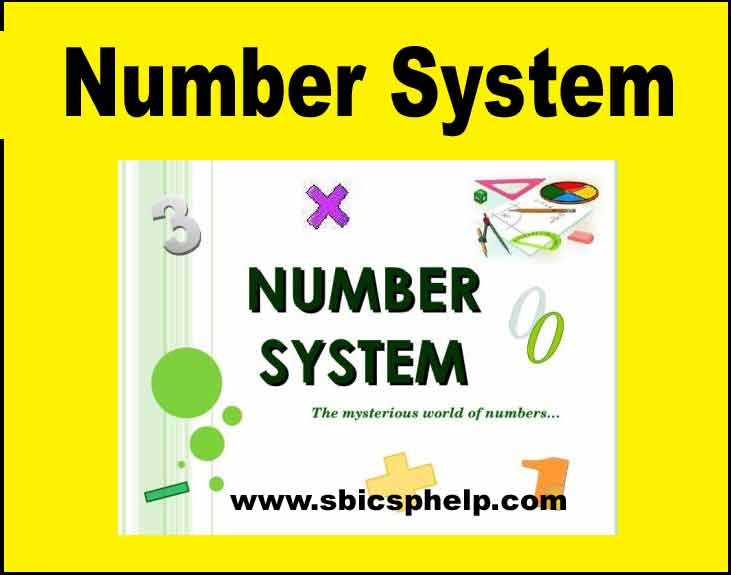Number System
Since time immemorial, Number and Number System have become an integral part of our life and it has dominated the entire world of Human Civilization in such a way that without it we can’t even imagine the existence of a small creature. So let us know the Number and Number System under various categories.
NATURAL NUMBER: Counting of objects/materials for the first time lead to the existence of the numeral 1(One). So, now we are all familiar that in order to count any objects we have to start with the numeral 1(one). This numeral 1(one) came into existence in a Natural Way. So it is known as Natural Numbers or Counting Numbers.
Hence, the set of numbers which are used in counting objects are called Natural Numbers or Counting Numbers.
N = {1,2,3,4,5,6,7,8,9,10,11,12,13,……….}
As the counting process starts from 1(one), so we can say that 1(One) is the smallest Natural Number.
[Can we write the largest Natural Number? (Think yourself and post a comment in our website)]
WHOLE NUMBERS: The set of numbers which starts from numeral 0(Zero) are called Whole Numbers
W = {0,1,2,3,4,5,6,7,8,9,10,11,12,13,……….}
[Can we write the largest Whole Number? (Think yourself and post a comment on our website)]
All Natural Numbers are Whole Numbers, but all Whole Numbers are not Natural Numbers.
(Think yourself and post a comment on the box, which Whole Number is not a Natural Number?)
INTEGER: It is a Latin word which means Whole. In general, we can say that the numbers which can be expressed/written without its fractional components are called Integers. For example – 9, 12, 13, etc are integers but 9.25, 12.365, 13.5222, etc are not integers.
The Set of Integers can be expressed as
I or Z= {…………,–13, –12, –11, –10, –9, –8, –7, –6, –5, –4, –3,–2, –1, 0, 1,2,3,4,5,6,7,8,9,10,11,12,13,………….}
OR
I or Z = {…………,–13, –12, –11, –10, –9, –8, –7, –6, –5, –4, –3, –2, –1, 0, +1, +2, +3, +4, +5, +6, +7, +8, +9, +10, +11, +12, +13,………..}
Integers are broadly classified into two groups:
- Positive Integers
- Negative Integers
Positive Integers – The set of positive integers are expressed as
I+ or Z+ = {1,2,3,4,5,6,7,8,9,10,11,12,13,………………}
I+ or Z+ = {+1, +2, +3, +4, +5, +6, +7, +8, +9, +10, +11, +12, +13,………………}
Negative Integers – The set of positive integers are expressed as
I– or Z– = {–1, –2, –3, –4, –5, –6, –7, –8, –9, –10, –11, –12, –13,……}
Note:
1. 0(Zero) is neither a Positive Integer nor a Negative Integer. It is neutral.
2. As stated above, the set of Natural Number can be expressed as
N = {1,2,3,4,5,6,7,8,9,10,11,12,13,……….}
and
The set of Positive Integer can be expressed as
I+ or z+= [1,2,3,4,5,6,7,8,9,10,11,12,13,………………]
OR
I+ or z+= [+1, +2, +3, +4, +5, +6, +7, +8, +9, +10, +11, +12, +13,………………]
Hence we conclude that Natural Numbers are the set of Positive Integers.
- 3. Except 0(Zero), any number with or without + Sign (Positive) are always a +ve (Positive) Numbers
For example : +3 and 3 carries same meaning i’e’, +3 =3





